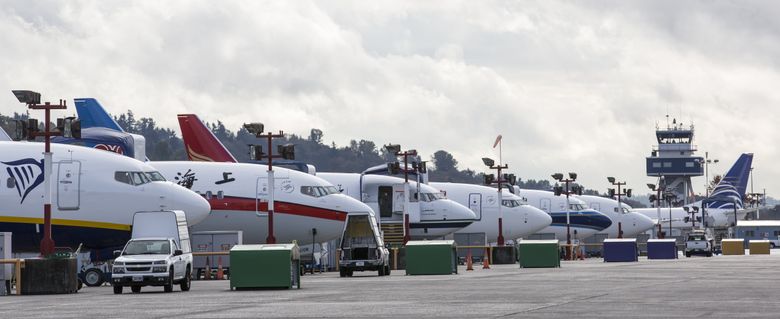Leeham News and Analysis
There's more to real news than a news release.
Bjorn’s Corner: Turbofan engine challenges, Part 4
November 18, 2016, ©. Leeham Co: In our series on modern turbofan airliner engines, we will now go deeper into the compressor part. Last week, we covered the fundamentals of compressors. As compressors and turbines use the same principles, we also covered the fundamental working principles of turbines.
We also described that compressors are temperamental parts, which can protest to wrong handling with violent “burps” (burst stalls with the combustion gases going out the front of the engine) or end up in a rotating stall where it simply stops working.

Figure 1. Stylistic cross section of a two shaft turbofan with both axial and radial compressor. Source: GasTurb.
Turbines, on the other hand, are your robust companions. Aerodynamically they just work, albeit more or less efficiently dependent on what one asks them to do (mechanically it can be very different; we recently saw a turbine disintegrate with large consequences on an American Airlines Boeing 767 in Chicago). More on the turbines later.
In the GasTurb cross section of a two shaft turbofan in Figure 1, the engine has both an axial and a radial compressor. We will consider why engine designers combine these two for certain engine types. Read more
Airbus, Boeing deferrals may indicate slowing global economy
Subscription Required
Introduction

Boeing 737 flightline at Boeing Field: 737s awaiting delivery. Seattle Times photo via Google images.
Nov. 17, 2016, © Leeham Co.: The deferral by United Airlines of 65 Boeing 737-700s announced Tuesday caused some observers to conclude this has a negative impact on the manufacturer, but this may well overlook a larger issue.
UAL is the latest “quality” airline to announce deferrals to reschedule capital expenditures or because of not needing the aircraft now.
Softening yields, particularly among US airlines, indicate over-capacity despite load factors of 85% or more, say industry observers.
While the backlogs of Boeing and Airbus remain solid today, do the actions of several major airlines indicate the leading edge of a global economy that’s beginning to soften?
Summary
Will Boom succeed where Concorde failed?
By Bjorn Fehrm
November 17, 2016, ©. Leeham Co: Boom Technology plans to do a 45-seat airliner for supersonic passenger traffic with service entry by 2023. Richard Branson’s Virgin Atlantic has already placed an optional order for 10 units of the aircraft.
The idea is to fly 45 business class passengers between New York and London in 3 hours and 25 minutes. This means the Boom Super Sonic Transport shall be 10% faster than the Aerospatiale/BAC Concorde.
What makes the Boom SST succeed where the Concorde failed?
We will look at the challenges that Concorde had and see how Boom SST plans to attack them. We will also discuss what the chances are that Boom SST can master these challenges. Read more
Boeing stock sell-off on United news appears misplaced
Nov. 16, 2016, © Leeham Co.: The market sell off yesterday of Boeing stock appeared on the surface to be a reaction to the news that United Airlines is deferring 61 737-700s and switching these to four larger 737-800s and the balance to either the 737-8 or 737-9.

Figure 1. Boeing stock traded down on news that United Airlines is deferring 65 737s. The price stayed flat through early today. But stock for Spirit Aerosystems, which makes the 737 fuselages, recovered after a short dip (Figure 2). This suggests the Boeing sell-off was for other reasons. Click on image to enlarge.
Boeing’s stock today remains flat-to-down slightly.
An odd thing happened concurrent to Boeing’s stock decline.
After a short dip, stock of Spirit Aerosystems recovered to the level before the UAL news and remained there through the time of this writing. Spirit makes the 737 fuselages. If Boeing’s stock was hit by the United decision, then logic suggests Spirit’s stock should have been, too.
This suggests the Boeing’s sell off has other reasons.
Pontifications: Leahy’s retirement from Airbus
Nov. 14, 2016, © Leeham Co.: News emerged last week that Airbus super-salesman John Leahy has a new deputy, Kiran Rao.
A new title for Rao wasn’t revealed in the Bloomberg story. He currently is EVP-Strategy and Marketing, so he already was right up there behind Leahy.
But the report, which is presumed true (Bloomberg has a good track record on this sort of thing) is pretty clear indication that the 66-year old Leahy is soon to retire and Rao is almost certainly his successor.
Leahy is Chief Operating Officer-Customers for Airbus Commercial.
Bjorn’s Corner: Turbofan engine challenges, Part 3
November 12, 2016, ©. Leeham Co: In our trip through a modern turbofan airliner engine and its technologies, we looked last week at the engine intake and the fan. We now continue with the compressor parts.
As compressors and turbines use the same principles (but in opposing ways), we will look at these principles this week and how their roles in the engine create their special characteristics.
As before, to make things concrete, we use a GasTurb simulation of a Rolls-Royce Trent XWB 84k engine to look at practical data when needed. As before, I have no specific knowledge about the engine and will not use any data outside what is public information.
The GasTurb cross section of a three-shaft turbofan is shown in Figure 1. We will examine the sections between station numbers (22) and (3) and (4) and (5) in the general discussion of compressors and turbines. We will then look at some data for common compressors. Read more








